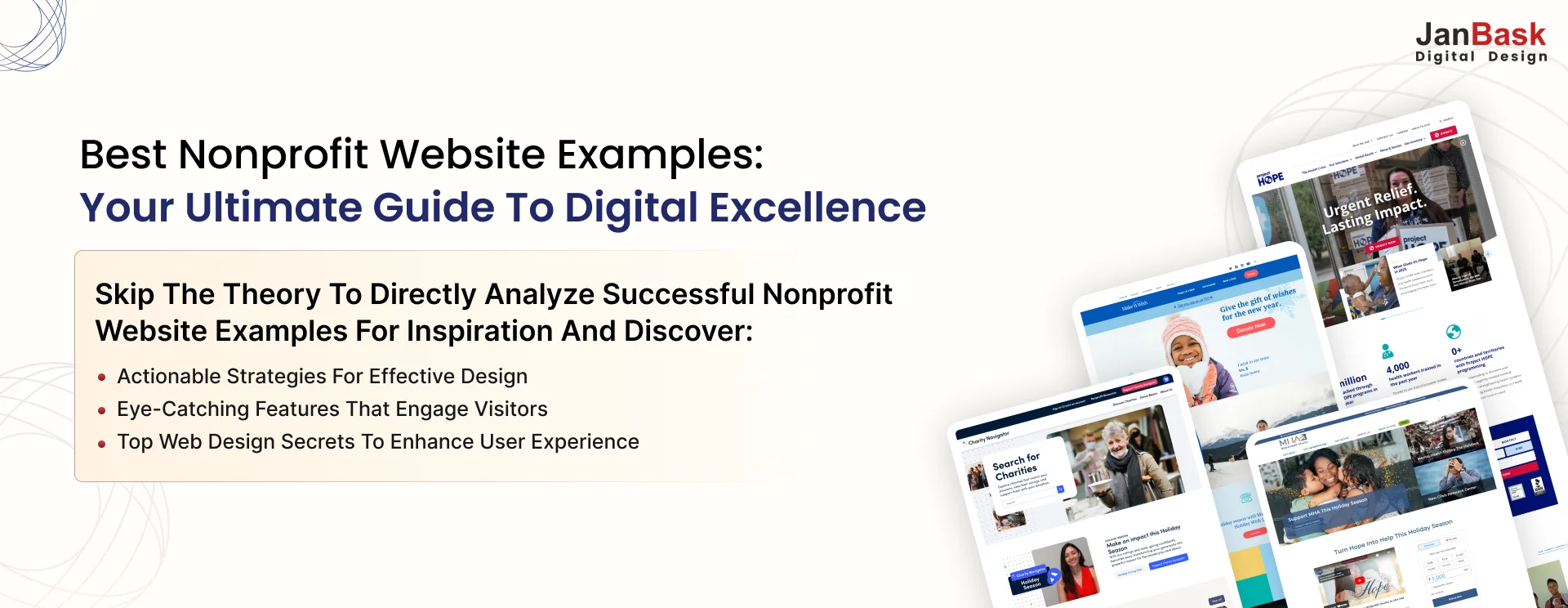
You have a fantastic vision, a devoted team, and a caring community, but your nonprofit is not getting the donations it deserves. What is missing? Is it your website's marketing strategy not reaching enough people? Your website’s poor first impression? Or your SEO strategy keeping you out of sight? Now is the time to uncover how to increase donations for nonprofits and help fuel the support needed for your cause!
Following are the 3 key strategies we’ll focus on which will help your donors in giving to nonprofit organizations-
1. Revisit your Marketing Strategy.
Even if your website is impressive, it won’t matter much if no one’s visiting. Have you thought about how to get more people to your site? A solid marketing strategy can make all the difference in bringing in the right audience.
2. SEO to grow your organic visitors.
Did you know that SEO can help your nonprofit reach more people? By optimizing your website, you increase visibility, attract supporters, and boost donations—all crucial for advancing your mission!
3. Your Website Conversion Rate Optimization.
Your website is more than just a customary digital presence for your nonprofit. It’s where people decide if they want to support you. Be honest: is it easy to navigate? Does it feel trustworthy and inspiring? If not, potential donors might leave without ever hitting that "donate" button.
How Important Are Marketing, SEO, And Website CRO For Your Nonprofit?
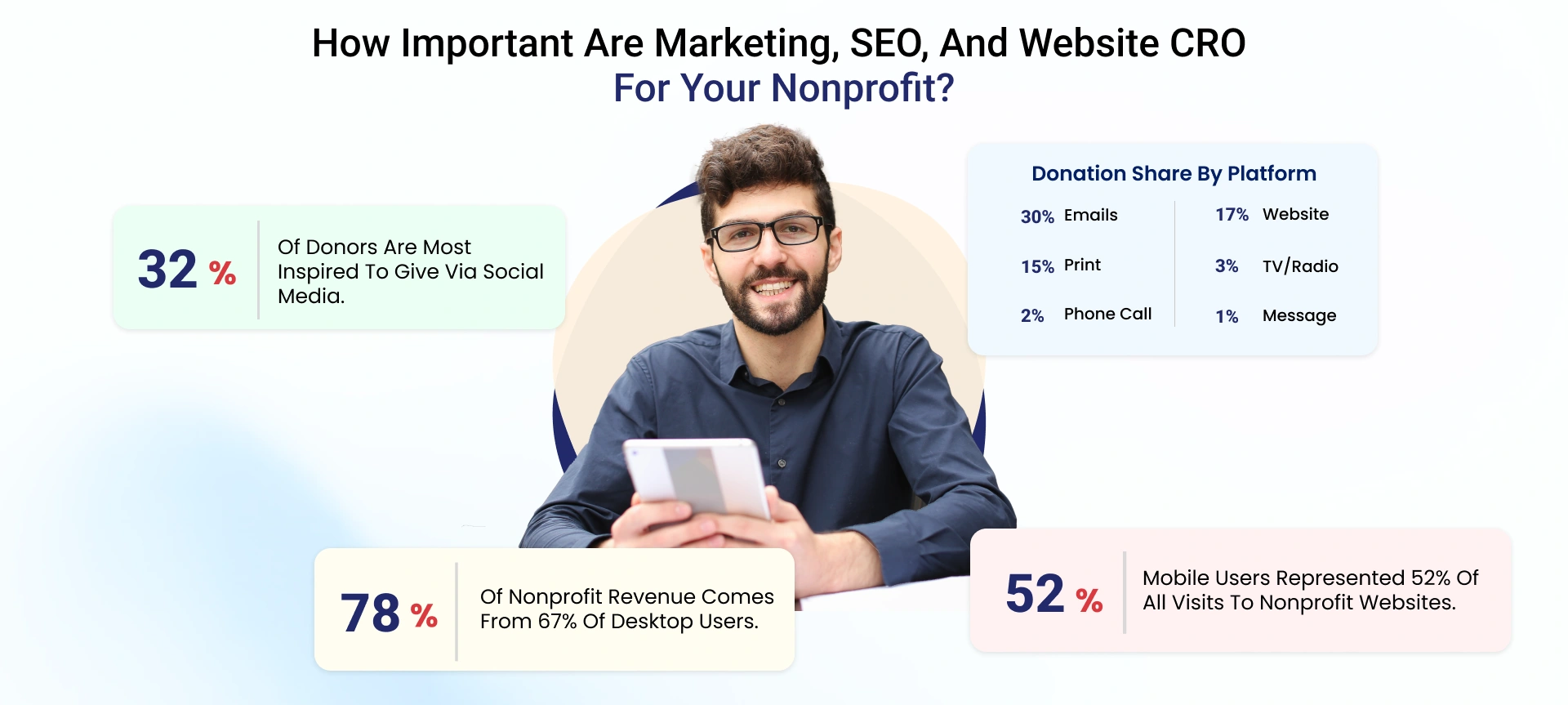
So, are you ready to boost online donations for nonprofits? We’re here to uncover the most common reasons nonprofits miss out on donations and share simple fixes that can make a huge difference. Learn some cool tips to increase online donations using your nonprofit website!

Already driving traffic to your nonprofit’s website? That’s amazing! It means people are already curious about your cause. But here’s the million-dollar question: Are you turning your nonprofit website’s visitors into long-term donors? If not, don’t worry, all is not lost. You can still do it with a few simple hacks and tweaks!
Half your battle is already won if you know what inspires your supporters to donate and how you can make it as easy and rewarding for them to take that next step. It’s not just about fixing what's broken; it’s about tapping into the full potential of your audience.
The truth is your current website traffic is your most valuable asset. So, why aren’t visitors clicking that “donate” button? As a web designer specializing in nonprofits, I’ve seen firsthand how minor design issues can stop people from taking action. Ready to turn visitors into donors?
At first, you should make sure that a donor feels rewarded; after that, you need to solidify that feeling. Get it visualized or have an event out of it- something like a small blast of digital confetti or adding their name to a list of donors on your website does the job. The better the reward, the more donors you will get.
Have you considered how to increase online donations for nonprofits through content and copywriting? What if the key to turning them into passionate supporters and donors is making your message more lucid, compelling, and easier to read? Who better than you to appreciate that small changes can have a massive impact in the long run? Ready to uncover proven techniques to increase donations using nonprofit websites’ content strategy.
Here’s the real deal: content writing and copywriting are not the same, but they are very similar, especially for nonprofits. Content writing contributes to establishing a bond between you and your audience by educating about your non-profit's mission, purpose, and outcomes. But have you thought about what moves them to take the next step? That’s where copywriting comes in. A little push that turns interest into action, whether it’s making a donation, signing up to volunteer, or spreading the word.
The Bike Project takes the extra step to make its supporters understand the significance when they select specific distances for the fundraising rides. Their donation page tells what different donation amounts mean to a refugee's journey to safety. It's really important to attach meaning to those different donation amounts!
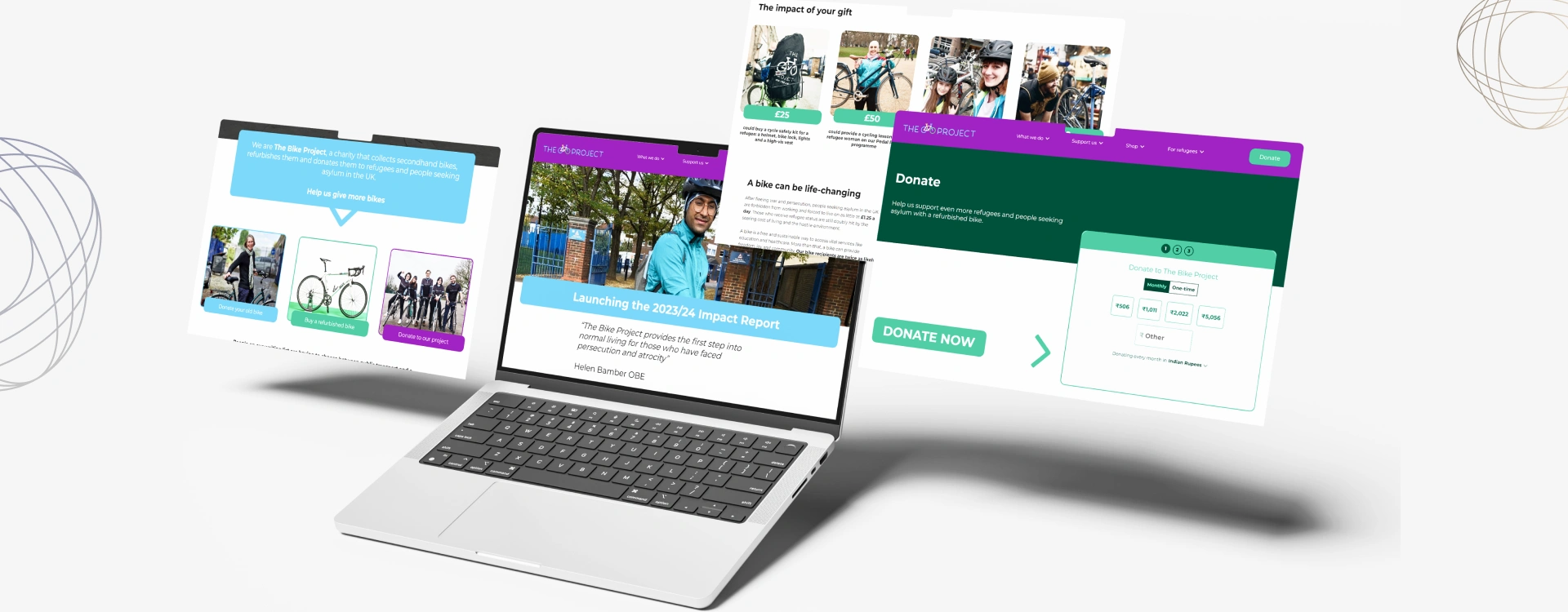
How can you pour your heart and soul into your content just like you do with your nonprofit? Here’s a roadmap to dive deeper:
Think of content writing as the heart of your nonprofit’s storytelling. It’s all about sharing your mission, inspiring hope, and building trust over time. Effective content writing uncovers the heart of the mission by:
Copywriting is your call to action—it’s what gets people to act now. It’s the persuasive words that inspire someone to click “Donate,” “Volunteer,” or “Sign Up.” Examples include:

Increasing online donations for nonprofits through copywriting:
No matter how compelling your message is, it won’t resonate if it’s hard to read. For nonprofits, readability is critical to ensuring your audience, who may come from different backgrounds, can connect with your cause.
How to improve readability for your nonprofit:
Branding is much more than your logo or color palette. It’s the way you communicate your mission, build trust, and connect with people on an emotional level. Without strong branding, your nonprofit’s website might confuse visitors—or worse, uninterested.
How you can improve your Nonprofit’s branding:
1. Create Consistency: Uniformly building your nonprofit's brand is fundamental to creating a distinguished, recognizable identity. You can develop your brand voice using a recognizable logo, color palette, and fonts that mirror your core values. When these elements are used consistently across your website and all digital platforms, a sense of credibility, trust, and the overall user experience are solidified. This method, therefore, beefs up the nonprofit's punch by guaranteeing that everybody can quickly identify and unite with your mission.

Branding consistency is demonstrated through screenshots of The Ocean Conservancy’s website and social media portals. You can see how Ocean Conservancy achieves consistent brand logos, color, and themes that reflect the same core values across all online presence. Images and videos of ocean animals captivate the audience and make their cause known, evoking an emotional response from them and boosting recurring donations.
2. Develop a Brand Voice: To make your non-profit's mission statement as clear and attractive as possible, it is essential to develop a brand voice. Your content should set a mood and evoke emotions in your audience, expressing passion, empathy, and purpose through your cause. The language used here should be simple and understandable, encouraging people to take action while adhering to their true selves. Whether formal or casual, the voice must be consistent with your organization's values and the emotional bond you strive for between the supporters and yourself. A well-produced brand voice does more than support your message; it also grabs the nuance of your community's trust.
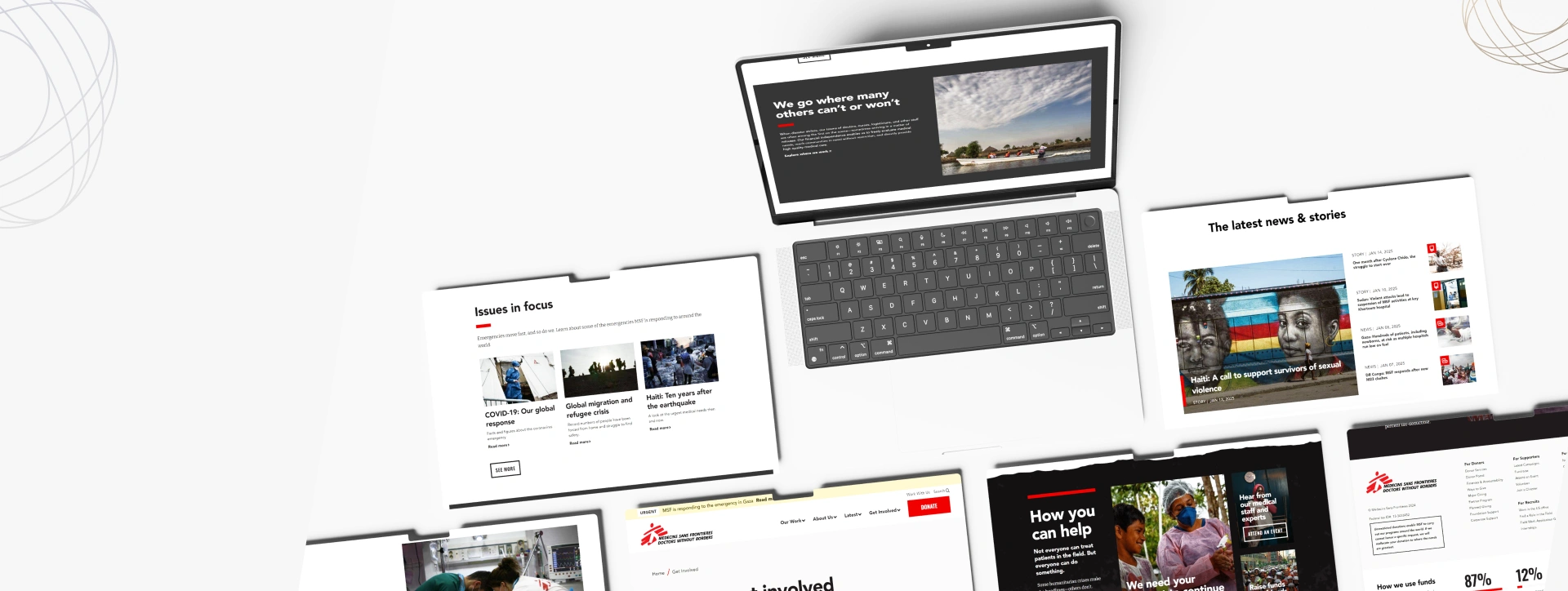
Doctors Without Borders effectively conveys the urgency and necessity of their humanitarian aid efforts in crisis areas through a brand voice that is urgent, empathetic, and authoritative. The organization calls for donors and volunteers to respond to the crisis immediately, demanding that they give and help without delay.
3. Show Your Mission: Sharing your nonprofit’s mission through storytelling on your homepage and your “About Us” pages helps your website’s visitor feel a connection with your page on an emotional level. Therefore, backing up your nonprofit's story with an example of the real people or communities that benefited from your nonprofit's work can go a long way in eliciting recurring donations. People and their stories give soul to your idea and event, and they are relatable and interesting.
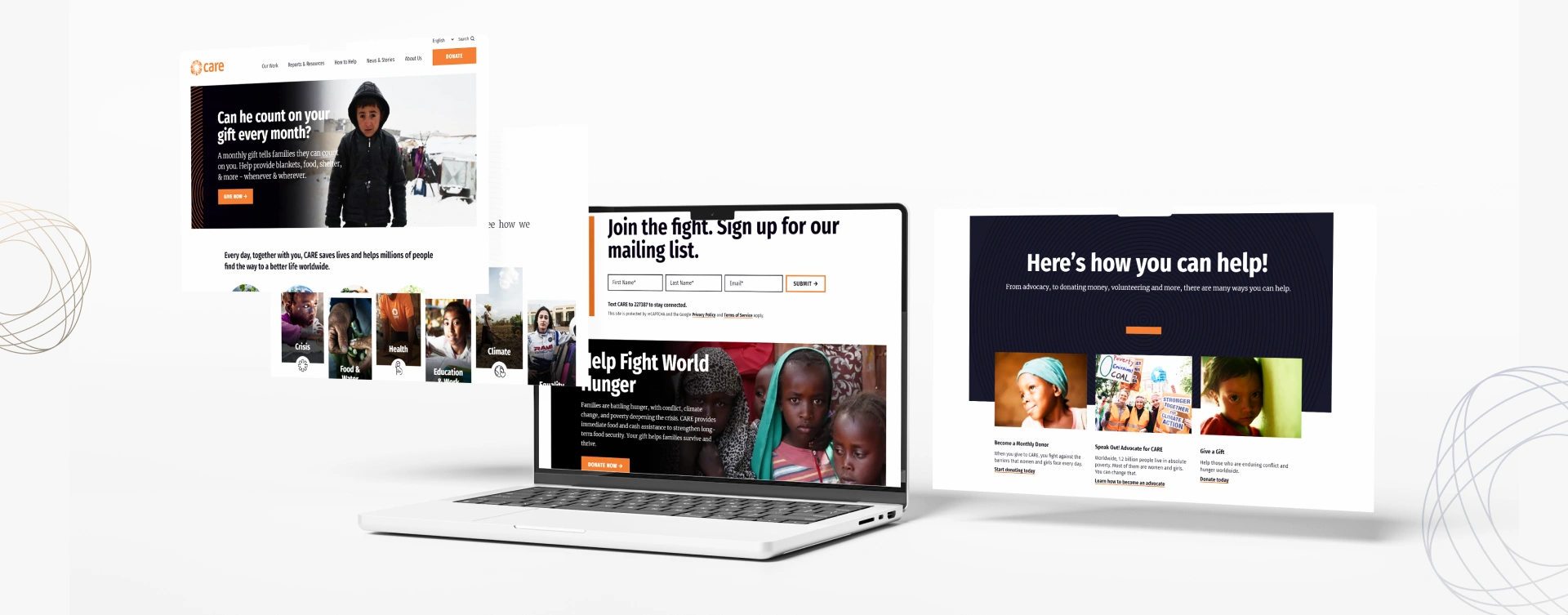
Care USA’s emotional appeal on its homepage via enticing storytelling techniques drives home its mission without overbearing visitors with unnecessary details. Their evocative visuals combined with impactful yet short text ensure that visitors are compelled to donate not once but numerous times. Furthermore, the organization routinely updates its impact metrics on its website to educate donors about their nonprofit contributions’ impact with complete transparency.
When your branding strategy is clear, visitors know they’re in the right place. They might feel disconnected and move on if it's unclear or inconsistent. A little effort to align your website with your nonprofit’s personality can go a long way in building trust and inspiring action.
Storytelling is about sharing experiences, emotions, and messages in a way that connects with people on a deeper level. For nonprofits, it’s about bringing their mission to life through real stories about the people and communities they support. It’s not just about facts and figures. It’s about creating a journey that touches hearts and inspires action.
Here’s how you can weave storytelling into your brand’s mission:
Here’s an example emphasizing the power of storytelling from The Angelina Foundation
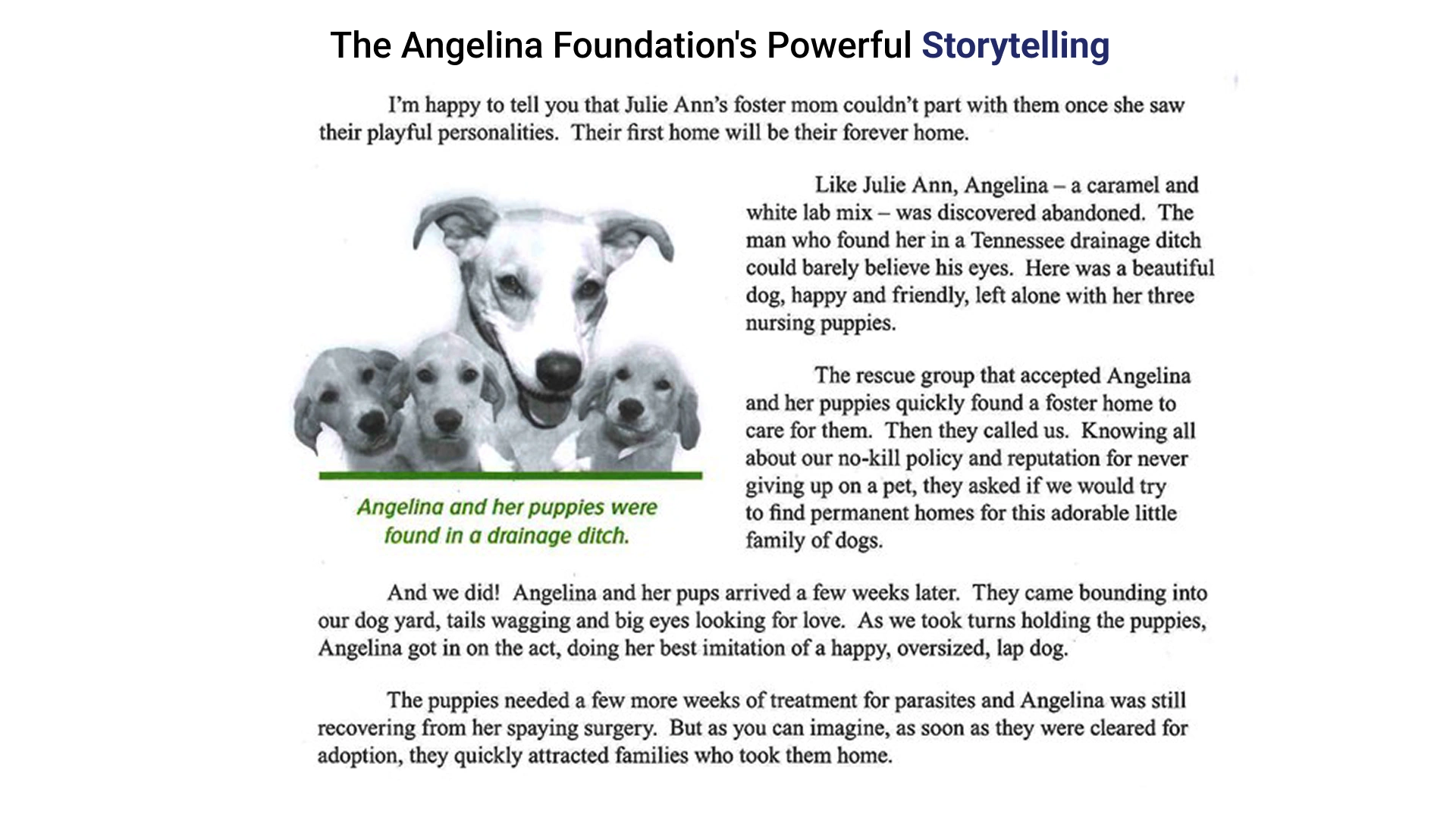


Let’s discuss two important metrics that can affect your nonprofit website visitors and impact your mission: bounce and engagement rates. These two work in opposite ways, and understanding them can help you get more people involved with your cause.
Have you ever wondered what bounce rate means? Simply put, it’s the percentage of visitors who land on your website and leave after seeing just one page without clicking around or taking action. Imagine someone clicking your link, landing on your homepage, and quickly heading out without exploring more. That’s a "bounce."
If your bounce rate is high, people aren’t sticking around to learn about your cause, read your stories, or get involved. But if your bounce rate is low, that’s a good sign they’re staying, exploring what you do, and hopefully feeling inspired to support you.

For nonprofits, the engagement rate is a powerful indicator of how connected visitors are to your mission. The more engaged people are, the more likely they are to donate, volunteer, or spread the word about your cause. Higher engagement means stronger relationships with your supporters.
A low engagement rate, on the other hand, can be a sign that people are visiting your website but not feeling inspired to take action. Maybe your content isn’t compelling enough, or your calls to action aren’t clear enough to encourage them to donate or get involved.
Let’s look at an example demonstrating unclear CTAs on a nonprofit website. An example of a poor CTA is the Under1Roof Dallas website, which has a donation section but could benefit from clearer and more prominent calls to action. To improve visibility, they could create a dedicated "Donate" button on the homepage, highlight it in the navigation bar, and simplify the donation process. Making the donation options visible and easy to find can encourage more contributions.
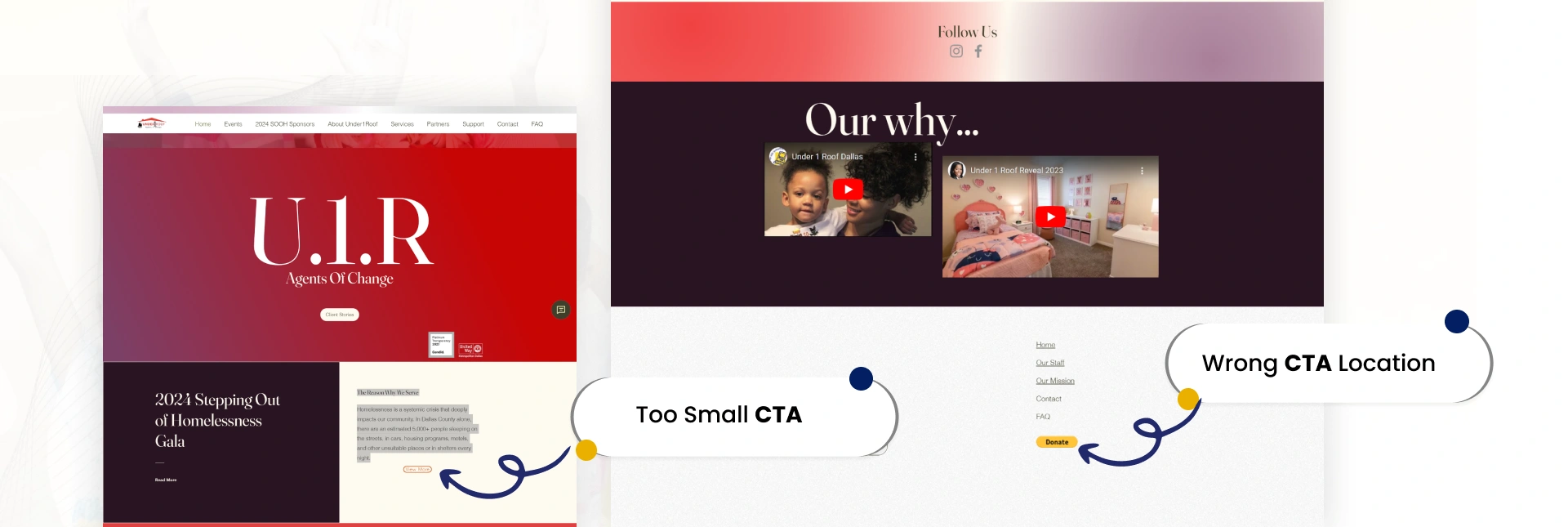
We’ve all been there, clicking on a website and waiting... and waiting… only to give up and leave. As a nonprofit, a slow site isn’t just frustrating; it’s a missed opportunity to connect with people who care about your cause. If your website is fast, easy to navigate, and works seamlessly, visitors are more likely to stick around, learn about your mission, and take action, whether that’s donating, volunteering, or spreading the word. But if it’s slow, clunky, or hard to use, they might leave before they even understand the impact they could make by supporting you.
A smooth, fast website isn’t just a convenience in a world where every second counts. It’s essential for turning online visitors into engaged supporters. A well-performing site can make all the difference in whether someone chooses to contribute to your mission or moves on to the next cause.
1. Slow Page Load Speed: A slow page load could annoy the website visitors and prompt them to leave if they have not yet gone through the mission statement.
2. Mobile Friendliness: With more users browsing on their phones, your site needs to be easy to navigate on small screens.
3. Poor Navigation and UI/UX: A complex interface or confusing design can make people unable to find what they are looking for quickly and get involved more.
4. No Whitespace: A cluttered site without enough whitespace can overwhelm visitors and make your content hard to read.
5. Functionality: Broken links, malfunctioning forms, or glitches can leave a bad impression and make it harder for people to donate or sign up.
6. Calls to Action: Clear and compelling calls to action guide visitors to take the next step, such as donating or volunteering, and help convert interest into support.
One effective way to check your website’s performance on key parameters is through Google’s PageSpeed Insights Tools, which is entirely free! Simply paste your website’s link in the analysis field and hit the “Analyze” button to get a comprehensive overview of your website's performance. You can even check analyses for your website’s mobile and desktop versions to test and tweak what works for nonprofit online donations.
The Prepared to Teach website has a Google PageSpeed Insights score of 95 based on an efficiently designed website with minimal usage of heavy scripts, optimized images, and other relevant metrics. The website performs well because it loads under 2 seconds, has a high FCP (First Contentful Paint), and significantly low TTI (Total Blocking Time), making it user-friendly to the customers.
Prepared to Teach is a non-profit organization that empowers teachers with resources and training to grow in their teaching practices to improve the lives of students and communities ultimately. Its digital presence is optimized for quick access and user engagement.

Google Pagespeed Insights Snapshot of the website:
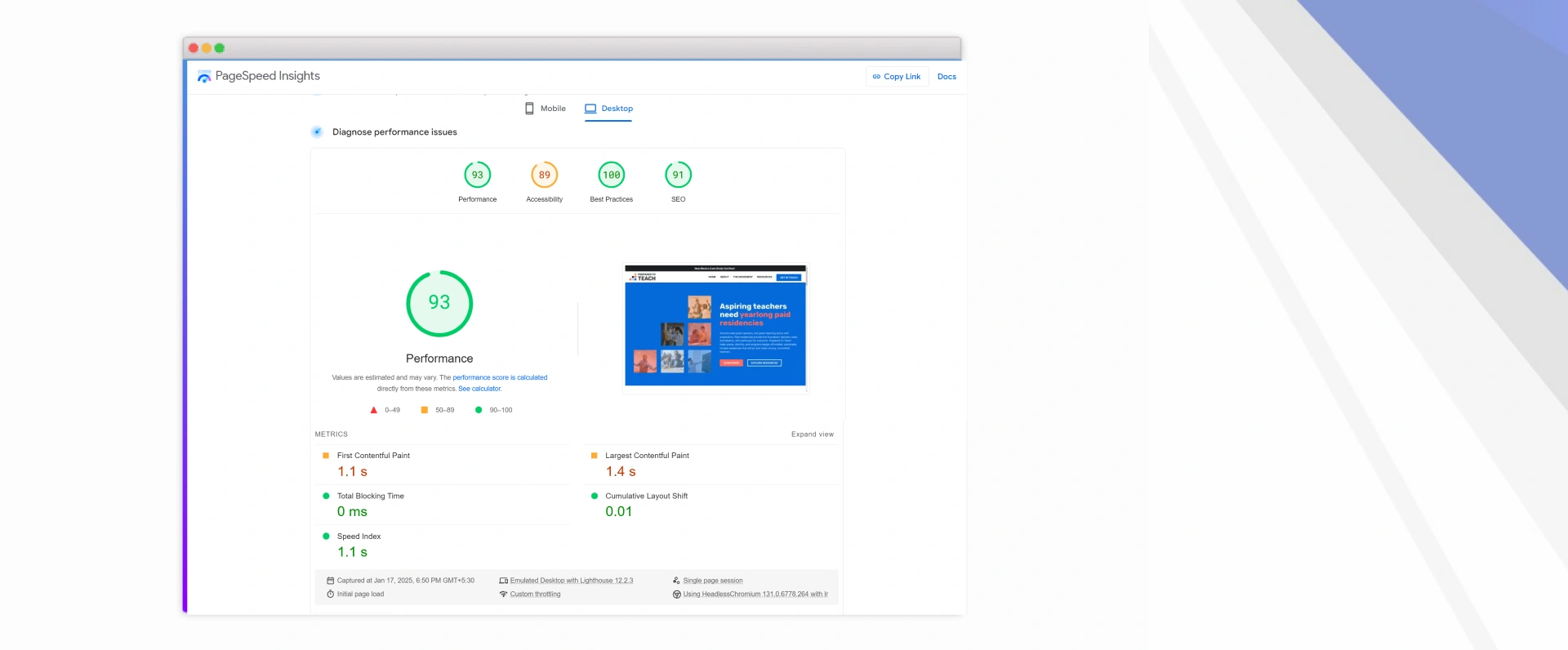
Website Performance Measurement Tools:
Here are some great tools that can help you track and improve your website’s speed and user experience
Is your website secure enough to build trust with your visitors? When people think about donating or sharing personal information, they want to know their data is safe. A secure website helps reassure them and makes them feel confident about supporting your cause. And what about payment options? Are you offering enough payment choices to make it easy for people to donate? How to increase donations for nonprofits? Providing multiple, secure payment methods means that no matter how your supporters prefer to give, they can do it quickly and safely. When you combine security with convenience, you’re making it easier for people to take action and help your nonprofit thrive.
1. Switch to HTTPS: HTTPS is a must if you're accepting donations! It ensures that all data exchanged is encrypted and secure, building trust with your visitors and not using HTTPS yet. It's simple and essential.
2. Get an SSL Certificate: An SSL certificate adds an extra layer of security by encrypting data between users and your website. Is your site protected with SSL yet?
3. Update Your Software Regularly: Outdated software, plugins, or themes can make your site vulnerable to hackers. Are your CMS and tools up to date?
1. Secure systems encrypt sensitive info like credit card details, preventing breaches with trusted platforms like Stripe or PayPal.
2. Features like SSL certificates or "Secured by PayPal" badges show donors you value their security, encouraging repeat donations.
3. Secure platforms detect suspicious activity, protecting your nonprofit from fraudulent and costly chargebacks.
4. Complying with regulations like GDPR and PCI DSS helps you avoid legal issues and ensures security.
5. A fast, smooth, secure payment process increases donor confidence and drives higher donation rates.
6. A data breach can harm your nonprofit’s image; secure systems maintain trust and professionalism.
7. Safe payment storage makes it easy for recurring donors to continue their support.
8. Secure systems provide clear transaction records, building donor confidence and simplifying audits.
Does your website have a reward system for your volunteers and existing members? Imagine how much smoother things could run if your volunteers and members had a dedicated portal to sign up, stay updated, and track their involvement all in one place. It’s not just about donations; it’s about creating a community where people feel connected and engaged. If your website lacks this feature, you could miss out on building deeper relationships with those who already support your cause. Let’s face it: when your team feels valued and informed, they’re more likely to stay involved and encourage others to join, too!

The availability of more payment processing options has a significant positive impact as it makes it easy for everyone who would like to donate to participate, makes donating speedier, reduces donation refusal, results in a higher retention rate, and creates better support from donors toward social issues.
Different donation options enable non-profits to tap into the minds and hearts of their donors. This ensures that such donors have a simple time making donations. This includes accepting cryptocurrency and credit card donations, honoring peer-to-peer fundraising capabilities, and pushing charities to reach a broader sphere of donors. As a result, this allows different benefits, such as increases in amounts that people raise from their donations.
Why are recurring donations such a game-changer for nonprofits?

For nonprofits, newsletters, events, and webinars are more than just tools; they’re lifelines for building lasting relationships, increasing support, and boosting your impact. Let’s break it down.
Newsletters: Regular newsletters are one of the best ways to stay connected with your supporters and keep them engaged with your nonprofit. Newsletters let people know what is going on at your nonprofit: new activities, achievements, and ways for donors and volunteers to participate. Put links to your website for a blog post, ways to donate, or how to volunteer. Consider it an encouraging reminder about why your cause matters, thus leading to return visits and ongoing support.
Events: Whether physical or virtual, they always rally your community's strength and provide more awareness towards your nonprofit’s cause. Charity runs, volunteer meets, and fundraising campaigns create massive excitement around your cause. This further provides fresh new content that may feature on your site and can be published. Ensure your events are easy to find on your website with precise descriptions and keyword-rich pages to ensure they rank well in search engines. This way, potential supporters can discover your events and get involved.
Webinar Calendar: Hosting webinars is an excellent way to educate your audience and engage them with the issues that matter most to your nonprofit’s mission. By dedicating a calendar on your website for upcoming webinars, you make it easy for visitors to register and attend. Promoting your webinars through newsletters and on social media boosts attendance and drives more traffic to your site. Optimize your registration pages with relevant keywords and event details to make the most of this, ensuring potential attendees can easily find them in search results.
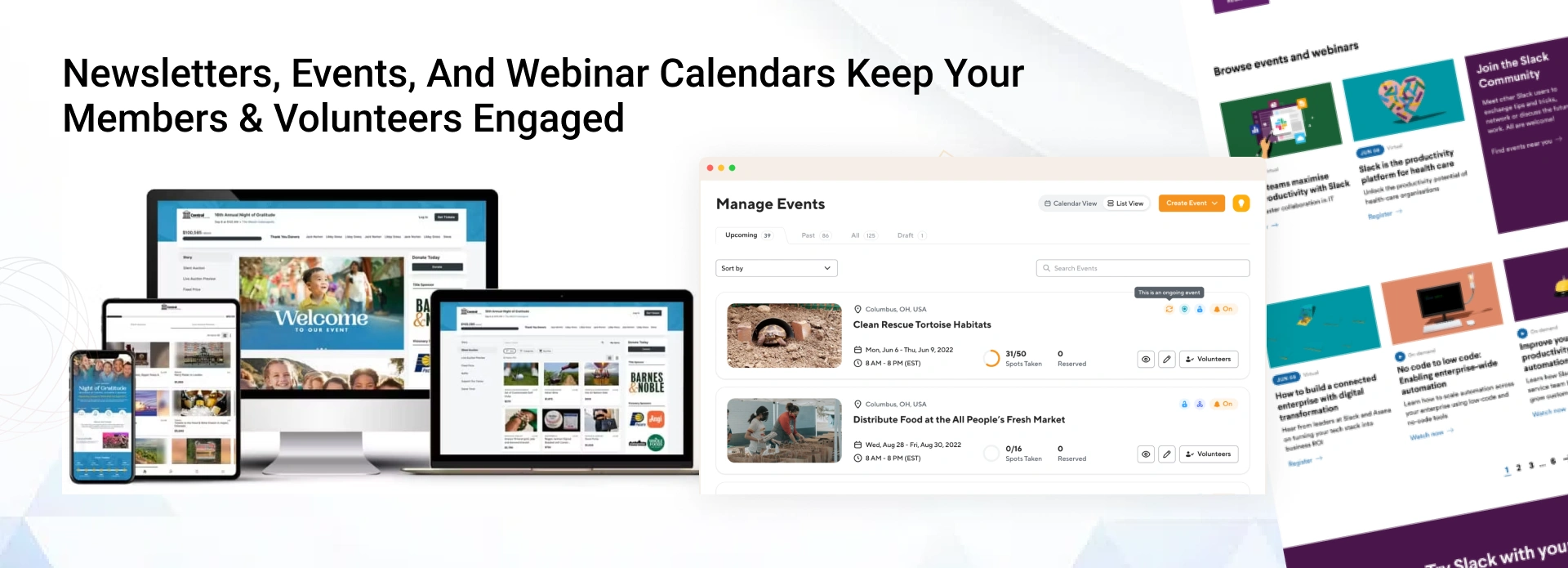
These critical elements lead to a stronger connection between your audience, higher website traffic, and extended outreach for your nonprofit. Do you leverage the newsletter, event, and webinars to engage the supporters and impact further?
Now, when you’re clearer about what's keeping your website from achieving the best foot forward, it's time to fix those mistakes and get as much in donations as you can through new visitors!
Nonprofits, usually working with a limited budget and long to-do lists, see the term “SEO” as nothing more than one of those trendy terms they need to learn when they would instead get their hands dirty. However, let me give you a reason: The magic is when people interested in your cause become aware of your existence online. Let us look at how SEO may be the most neglected tool in the professional toolbox of your non-profit organization, which can be leveraged for unimaginable donation success.
Nonprofit SEO is a powerful tool for developing long-term branding and raising one-time or recurring donations. By focusing on organic reach, you can engage more supporters and persuade them to give donations regularly. Optimizing your website with CRO techniques improves conversions, lead acquisitions, and retentions, leading to higher donation levels.
Consistent SEO efforts also increase visibility on search engines such as Google and Bing, thus creating more traffic and drawing people to your nonprofit. Steady, personalized communication is the key to building donor relations that in the end lead to the increase of financial support for your mission.
Here’s how you can get started with solid SEO for your nonprofit:
Attracting new followers means advertising and spreading your mission to the people unaware. A mission can grab more attention by keeping the audience engaged, which can be achieved by creating interesting content, engaging partners, and using paid ads. Below are some quick and powerful techniques to kick off your promotion.
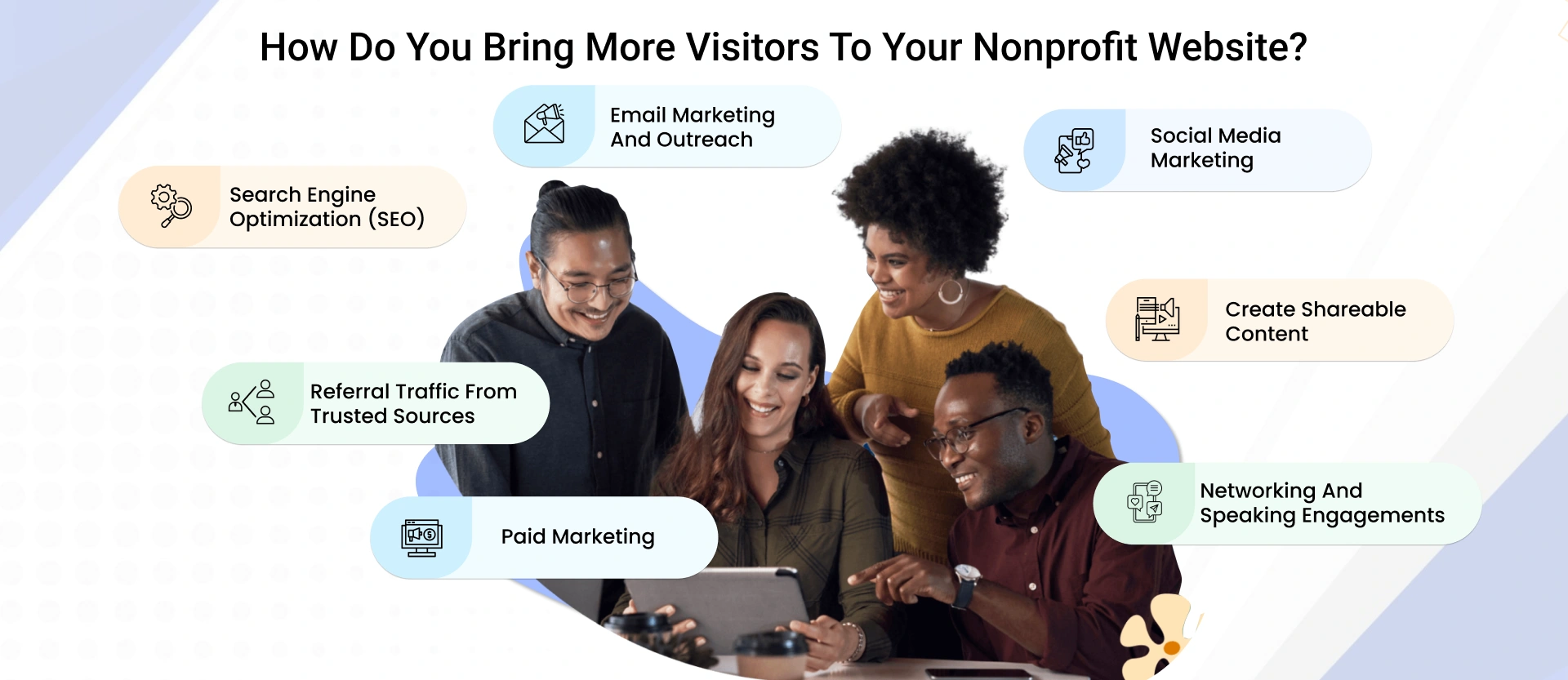
Email marketing is one of the best ways to attract new visitors to your nonprofit’s website—and it’s easier than you might think! Here’s how you can make it work:
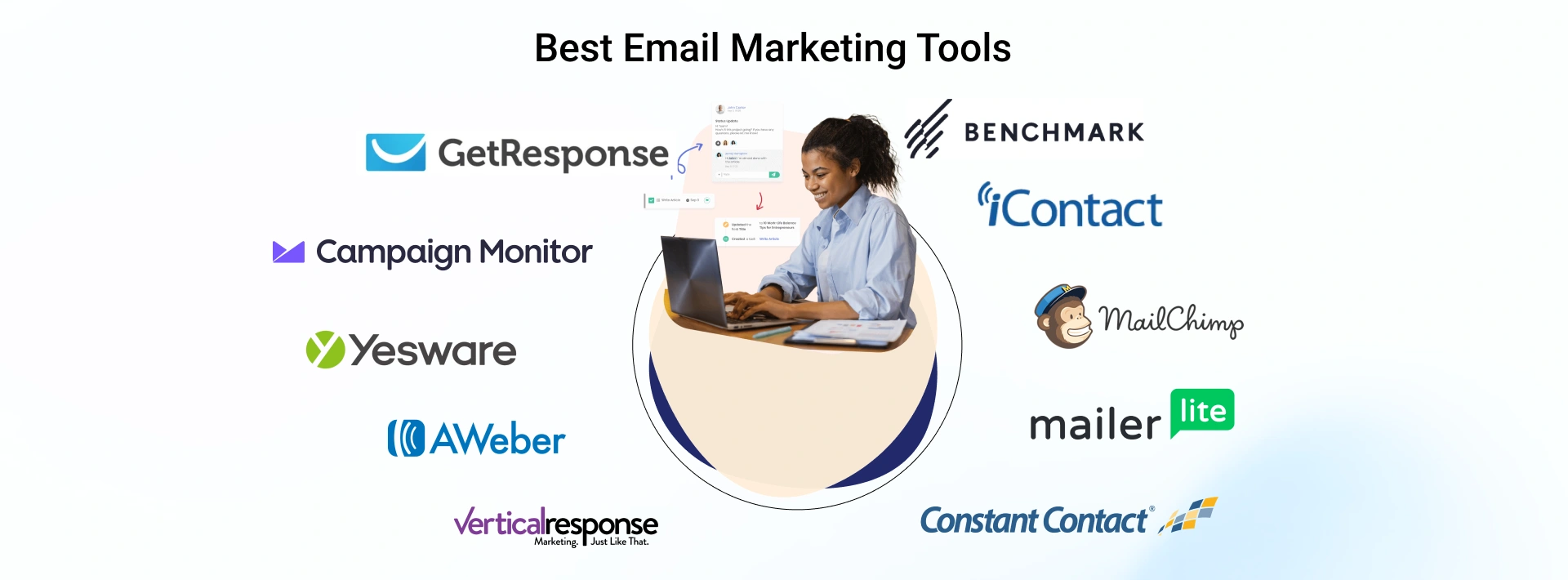
Strong Connections Building: Emails are your nonprofit's notes. They include regular newsletter updates with calls to action, helping build a more substantial engagement between the public and the cause and compelling individuals to log in to the site for further details, such as donating, volunteering, or upcoming new ventures.
Targeting the Right People: One cool thing about email marketing is that you can send personalized content based on your supporters' interests and interests. This makes it more likely that they’ll click through to your website when they see something relevant.
Encouraging Action: Have you ever wanted someone to visit a page on your site, such as a donation form or an event signup? Email marketing is the solution for that! You can lead your readers anywhere if your email is written persuasively enough with a specific call to action.
Spreading the Word: When your email content is valuable, subscribers are more likely to share it with friends and family, which can bring new visitors to your site. It’s a great way to expand your reach and introduce your cause to fresh eyes!
Growing and Keeping Your List: Building a list of engaged individuals is a tough job. Keeping your list updated regularly can be crucial to having success- an excited and dedicated group of supporters.
Creating Engaging Content: Let’s face it—people get a lot of emails. It might get lost in the shuffle if yours doesn't stand out. The trick is to craft informative but also exciting, inspiring, and action-driven content so your readers are motivated to visit your site.
Finding the Right Balance: How often should you email your supporters? Too many emails and you risk annoying them, too few, and they might forget about you. It’s all about finding that sweet spot in frequency and timing to keep your audience engaged without overwhelming them.
Tracking What Works: It is not easy to track the emails of users who visit your website as individuals. Multiple internet tracking services determine how to analyze click-throughs, donations, and actions to allow for the repeated realignment of the strategy.
Time and Resources: Achieving a successful e-mail campaign takes time. Often, the agency doesn't have the resources to spend much time designing, copying, and analyzing e-mails. It's also essential to balance or even get help in your efforts.
If you want to get noticed quickly, paid ads are a great way to attract new visitors. Here’s how to make ads work for you:
Social media is where the magic happens. It’s where people discover new things every day. Are you making the most of it? Here’s how to grow your audience:
Getting links from reputable sources can do wonders for bringing in new visitors. Here’s how to make it happen:
Let’s be honest: everyone loves sharing incredible content with their friends. Make your content irresistible by adding these features:
Being seen in the right circles can get you in front of fresh audiences. Here’s how to network your way to new visitors:
In conclusion, your nonprofit’s website can be a game-changer in driving donations and connecting with supporters. But simply having a website isn’t enough—you must make it work!
One of the most daunting things is keeping a website modern and easy to use, especially when time and financial resources are seldom available. One of the biggest turn-offs to visitors would be slow load times, bad navigation, and outdated content. It is very tough to ensure your site is approachable and warm to the heart of every potential donor.
Don’t forget a website is never a one-and-done project. It needs ongoing updates, content, and security maintenance to stay relevant and functional. By planning for the long term, you can create a website that continuously supports your nonprofit’s mission of increasing one-time or recurring donations.
Now that you might better appreciate the value of investing in a professional nonprofit website, it’s time to take action. Start by analyzing what your nonprofit truly needs. What features and functionality will help you meet your goals? Once you’ve identified these needs, estimate the budget required for nonprofit website design, development, content, and ongoing maintenance.
If you haven’t yet found an agency that truly understands your vision and has a proven track record of success in the nonprofit sector, JanBask might be the perfect fit. Based in Virginia, JanBask has extensive experience working with nonprofits and other industries, delivering websites that look great and perform exceptionally. Their portfolio speaks for itself, with successful projects for major companies in education, defense research, and nonprofit sectors.
N
Loved the tips on boosting online donations! A strong digital strategy really makes a difference for nonprofits. The practical steps and focus on donor experience were especially helpful. I especially liked how it breaks things down for both small and growing organizations. Looking forward to more actionable ideas like these!
N
Really appreciated the step-by-step breakdown. It helped us revamp our donation page for better results